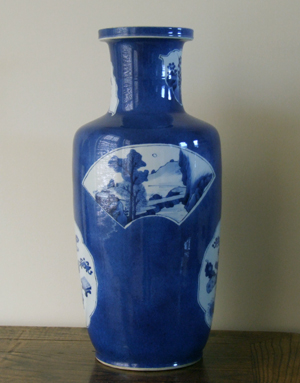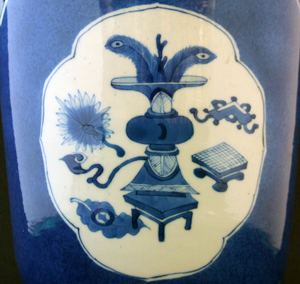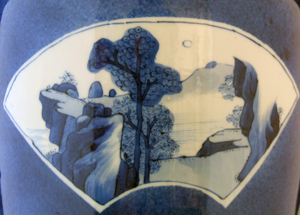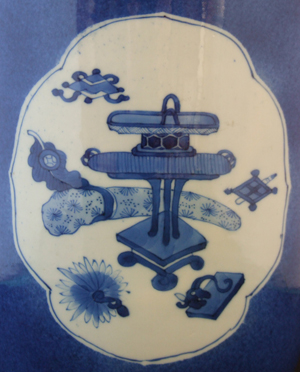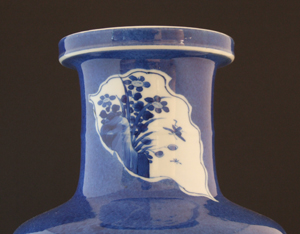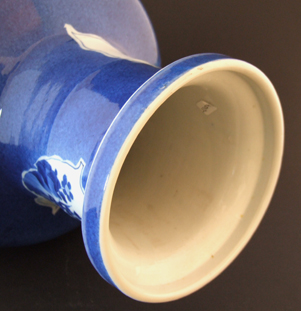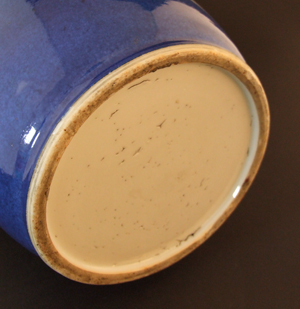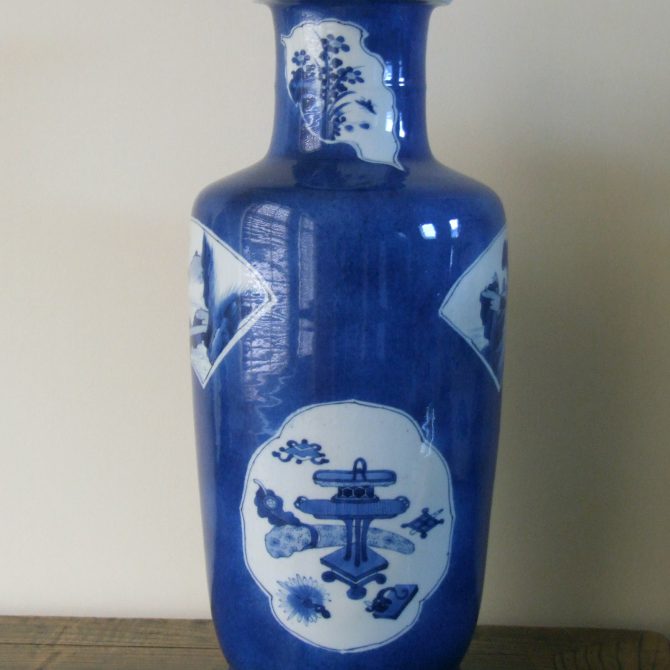
KANGXI 1662 – 1722 Qing Porcelain
A Large Kangxi Blue and White Rouleau Vase c.1690-1710. The Powder Blue Vase has Variously Shaped Reserve Panels Including Leaf, Fan and Barbed Quatrefoil. These are Decorated with `Hundred Antiques` Type Designs as Well as a Mountainous Landscape and a Flowering Plant Growing from Rocks. The Blue is Exceptionally Vibrant and Bright, this Does not Show up well on the Photographs.
SOLD
- Condition
- A 'U' shaped section of the rim restuck, this has been restored. Some scratching to the restoration on the top of the rim.
- Size
- Height : 44.2cm (17 1/3 inches).
- Provenance
- N/A
- Stock number
- 24055
Information
Powder-Blue Decoration :
This type of decoration is associated with the Kangxi period but its origins can be traced to the end of the Ming Dynasty, during the reigns of Tianqi and Chongzhen. Indeed these pieces are a revival of an early Ming technique that seems to have been abandoned or lost at about the time of Xuande. The late Ming examples comprise a group of dishes made at the Jingdezhen kilns during the second quarter of the 17th century. They use an uneven blue ground of a mottled appearance (see `Sold Items` 19206 and 17133), referred to as `Fukizumi` in Japanese they have the characteristics of what we now call powder blue. It was during the Kangxi (1662-1722) that the technique became refined and combined with gilding, Famille Verte or other over-glaze colours. Powder-blue glazes are somewhat different from other Qing blue glazes in that the cobalt was not mixed with the glaze. Instead, it was blown dry onto the biscuit body of the porcelain by using a piece of gauze stretches over the end of a bamboo tube. The result is a somewhat frothy soft effect. Paper or wax resist were used to reserve areas from the blue that could then be decorated after glazing.
Hundred Antiques :
The `Hundred Antiques` is a Pattern Comprising a Mixture of Either the `Eight Treasures` (pearl, lozenge, stone chime, rhinoceros` horn, coin, mirror, book, and leaf) and or `The Four Treasures`. The Later being the Symbols of the Four Arts (music, chess, calligraphy and painting). These Symbolic Depictions are Combined with Numerous Conventional Representations of Sacrificial Vessels, Flowers, Animals, as Well as Small Decorative Motifs.
